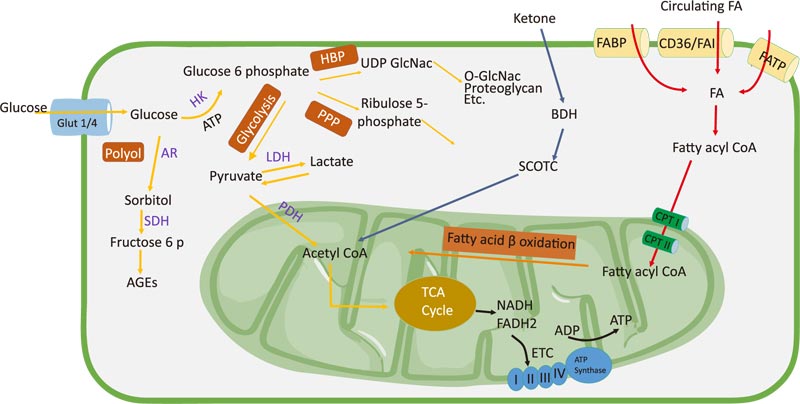Fig. (1)
Glucose metabolism in the heart. During glucose metabolism (yellow arrows), glucose enters the cells via the glucose transporters GLUT1 and GLUT4. Glycolysis begins with the conversion of glucose to glucose-6-phosphate, which is, in turn, is converted to pyruvate by pyruvate dehydrogenase. Pyruvate either enters the tricarboxylic acid (TCA) cycle in the mitochondria to produce ATP via the electron transport chain or is converted to lactate by lactate dehydrogenase (LDH). In addition to glycolysis, glucose undergoes intermediate glycolysis via the hexosamine biosynthetic pathway (HBP), pentose phosphate pathway (PPP), and polyol pathway. Circulating fatty acids (FAs) cross the cardiomyocyte membrane (red arrows) via the transporters fatty acid translocase (FAT/CD36), plasma membrane fatty acid-binding protein (FABPpm), and fatty acid transport protein (FATP). Fatty acyl-CoA enters the mitochondria via carnitine palmitoyltransferase (CPT) I and CPT II and undergoes β-oxidation. Ketones are also converted to acetyl-CoA (blue arrows) by succinyl-CoA: 3-oxoacid-CoA transferase (SCOT) and β-hydroxybutyrate dehydrogenase 1 (BHD1).


